Neural Style Transfer with tf.keras
 Run in Google Colab Run in Google Colab |  View source on GitHub View source on GitHub |
Overview
In this tutorial, we will learn how to use deep learning to compose images in the style of another image (ever wish you could paint like Picasso or Van Gogh?). This is known as neural style transfer! This is a technique outlined in Leon A. Gatys’ paper, A Neural Algorithm of Artistic Style, which is a great read, and you should definitely check it out.
But, what is neural style transfer?
Neural style transfer is an optimization technique used to take three images, a content image, a style reference image (such as an artwork by a famous painter), and the input image you want to style – and blend them together such that the input image is transformed to look like the content image, but “painted” in the style of the style image.
For example, let’s take an image of this turtle and Katsushika Hokusai’s The Great Wave off Kanagawa:
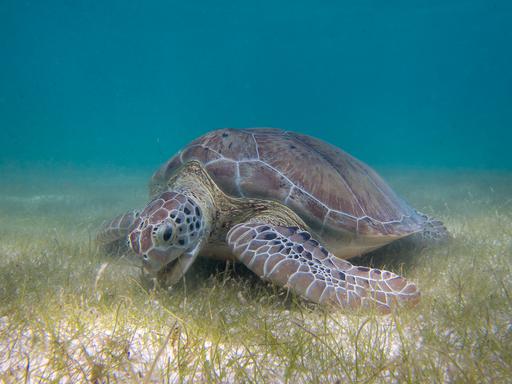
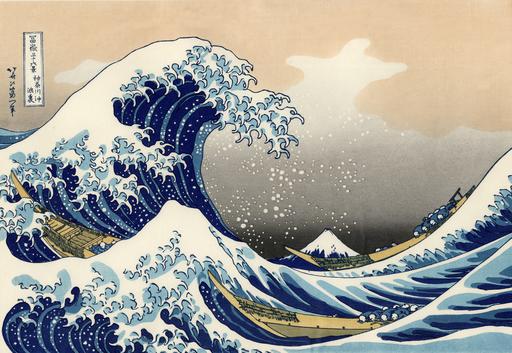
Image of Green Sea Turtle
-By P.Lindgren [CC BY-SA 3.0 (https://creativecommons.org/licenses/by-sa/3.0)], from Wikimedia Common
Now how would it look like if Hokusai decided to paint the picture of this Turtle exclusively with this style? Something like this?
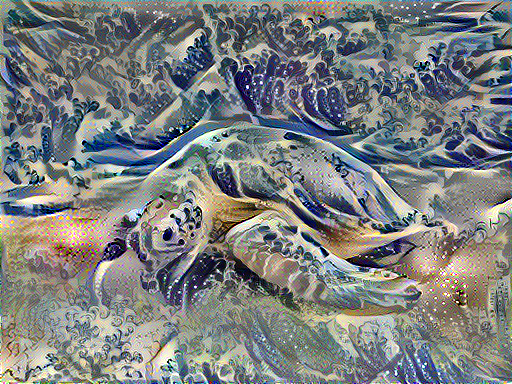
Is this magic or just deep learning? Fortunately, this doesn’t involve any witchcraft: style transfer is a fun and interesting technique that showcases the capabilities and internal representations of neural networks.
BP去optimize减少两个distance
The principle of neural style transfer is to define two distance functions, one that describes how different the content of two images are , $L_{content}$, and one that describes the difference between two images in terms of their style, $L_{style}$. Then, given three images, a desired style image, a desired content image, and the input image (initialized with the content image), we try to transform the input image to minimize the content distance with the content image and its style distance with the style image.
In summary, we’ll take the base input image, a content image that we want to match, and the style image that we want to match. We’ll transform the base input image by minimizing the content and style distances (losses) with backpropagation, creating an image that matches the content of the content image and the style of the style image.
Specific concepts that will be covered:
In the process, we will build practical experience and develop intuition around the following concepts
- Eager Execution - use TensorFlow’s imperative programming environment that evaluates operations immediately
- Using Functional API to define a model - we’ll build a subset of our model that will give us access to the necessary intermediate activations using the Functional API
- Leveraging feature maps of a pretrained model - Learn how to use pretrained models and their feature maps
- Create custom training loops - we’ll examine how to set up an optimizer to minimize a given loss with respect to input parameters
We will follow the general steps to perform style transfer:
- Visualize data
- Basic Preprocessing/preparing our data
- Set up loss functions
- Create model
- Optimize for loss function
Audience: This post is geared towards intermediate users who are comfortable with basic machine learning concepts. To get the most out of this post, you should:
- Read Gatys’ paper - we’ll explain along the way, but the paper will provide a more thorough understanding of the task
- Understand reducing loss with gradient descent
Time Estimated: 30 min
Setup
Download Images
1 | import os |
Import and configure modules
1 | import matplotlib.pyplot as plt |
1 | import tensorflow as tf |
/home/dongnanzhy/miniconda3/lib/python3.6/site-packages/h5py/__init__.py:36: FutureWarning: Conversion of the second argument of issubdtype from `float` to `np.floating` is deprecated. In future, it will be treated as `np.float64 == np.dtype(float).type`.
from ._conv import register_converters as _register_converters
We’ll begin by enabling eager execution. Eager execution allows us to work through this technique in the clearest and most readable way.
1 | tf.enable_eager_execution() |
Eager execution: True
1 | # Set up some global values here |
Visualize the input
1 | def load_img(path_to_img): |
1 | def imshow(img, title=None): |
These are input content and style images. We hope to “create” an image with the content of our content image, but with the style of the style image.
1 | plt.figure(figsize=(10,10)) |
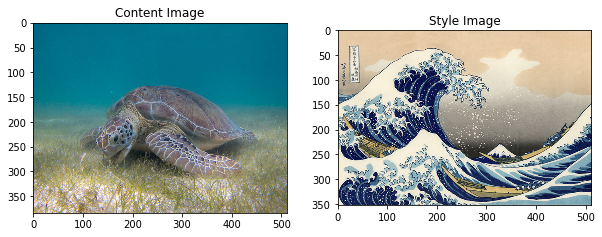
Prepare the data
Let’s create methods that will allow us to load and preprocess our images easily. We perform the same preprocessing process as are expected according to the VGG training process. VGG networks are trained on image with each channel normalized by mean = [103.939, 116.779, 123.68]and with channels BGR.
1 | def load_and_process_img(path_to_img): |
In order toview the outputs of our optimization, we are required to perform the inverse preprocessing step. Furthermore, since our optimized image may take its values anywhere between $- \infty$ and $\infty$, we must clip to maintain our values from within the 0-255 range.
1 | def deprocess_img(processed_img): |
Define content and style representationst
In order to get both the content and style representations of our image, we will look at some intermediate layers within our model. As we go deeper into the model, these intermediate layers represent higher and higher order features. In this case, we are using the network architecture VGG19, a pretrained image classification network. These intermediate layers are necessary to define the representation of content and style from our images. For an input image, we will try to match the corresponding style and content target representations at these intermediate layers.
Why intermediate layers?
You may be wondering why these intermediate outputs within our pretrained image classification network allow us to define style and content representations. At a high level, this phenomenon can be explained by the fact that in order for a network to perform image classification (which our network has been trained to do), it must understand the image. This involves taking the raw image as input pixels and building an internal representation through transformations that turn the raw image pixels into a complex understanding of the features present within the image. This is also partly why convolutional neural networks are able to generalize well: they’re able to capture the invariances and defining features within classes (e.g., cats vs. dogs) that are agnostic to background noise and other nuisances. Thus, somewhere between where the raw image is fed in and the classification label is output, the model serves as a complex feature extractor; hence by accessing intermediate layers, we’re able to describe the content and style of input images.
Specifically we’ll pull out these intermediate layers from our network:
1 | # Content layer where will pull our feature maps |
Build the Model
In this case, we load VGG19, and feed in our input tensor to the model. This will allow us to extract the feature maps (and subsequently the content and style representations) of the content, style, and generated images.
We use VGG19, as suggested in the paper. In addition, since VGG19 is a relatively simple model (compared with ResNet, Inception, etc) the feature maps actually work better for style transfer.
In order to access the intermediate layers corresponding to our style and content feature maps, we get the corresponding outputs and using the Keras Functional API, we define our model with the desired output activations.
With the Functional API defining a model simply involves defining the input and output:
model = Model(inputs, outputs)
1 | def get_model(): |
In the above code snippet, we’ll load our pretrained image classification network. Then we grab the layers of interest as we defined earlier. Then we define a Model by setting the model’s inputs to an image and the outputs to the outputs of the style and content layers. In other words, we created a model that will take an input image and output the content and style intermediate layers!
Define and create our loss functions (content and style distances)
Content Loss
Our content loss definition is actually quite simple. We’ll pass the network both the desired content image and our base input image. This will return the intermediate layer outputs (from the layers defined above) from our model. Then we simply take the euclidean distance between the two intermediate representations of those images.
More formally, content loss is a function that describes the distance of content from our output image $x$ and our content image, $p$. Let $C_{nn}$ be a pre-trained deep convolutional neural network. Again, in this case we use VGG19. Let $X$ be any image, then $C_{nn}(X)$ is the network fed by X. Let $F^l_{ij}(x) \in C_{nn}(x)$ and $P^l_{ij}(p) \in C_{nn}(p)$ describe the respective intermediate feature representation of the network with inputs $x$ and $p$ at layer $l$. Then we describe the content distance (loss) formally as: $$L^l_{content}(p, x) = \sum_{i, j} (F^l_{ij}(x) - P^l_{ij}(p))^2$$
We perform backpropagation in the usual way such that we minimize this content loss. We thus change the initial image until it generates a similar response in a certain layer (defined in content_layer) as the original content image.
This can be implemented quite simply. Again it will take as input the feature maps at a layer L in a network fed by x, our input image, and p, our content image, and return the content distance.
Computing content loss
We will actually add our content losses at each desired layer. This way, each iteration when we feed our input image through the model (which in eager is simply model(input_image)!) all the content losses through the model will be properly compute and because we are executing eagerly, all the gradients will be computed.
这里输入的feature maps应该是(height, width, channels), 没有batch_size, 见get_feature_representations()
输出是一个scala
1 | def get_content_loss(base_content, target): |
Style Loss
Computing style loss is a bit more involved, but follows the same principle, this time feeding our network the base input image and the style image. However, instead of comparing the raw intermediate outputs of the base input image and the style image, we instead compare the Gram matrices of the two outputs.
Mathematically, we describe the style loss of the base input image, $x$, and the style image, $a$, as the distance between the style representation (the gram matrices) of these images. We describe the style representation of an image as the correlation between different filter responses given by the Gram matrix $G^l$, where $G^l_{ij}$ is the inner product between the vectorized feature map $i$ and $j$ in layer $l$. We can see that $G^l_{ij}$ generated over the feature map for a given image represents the correlation between feature maps $i$ and $j$.
To generate a style for our base input image, we perform gradient descent from the content image to transform it into an image that matches the style representation of the original image. We do so by minimizing the mean squared distance between the feature correlation map of the style image and the input image. The contribution of each layer to the total style loss is described by
$$E_l = \frac{1}{4N_l^2M_l^2} \sum_{i,j}(G^l_{ij} - A^l_{ij})^2$$
where $G^l_{ij}$ and $A^l_{ij}$ are the respective style representation in layer $l$ of $x$ and $a$. $N_l$ describes the number of feature maps, each of size $M_l = height * width$. Thus, the total style loss across each layer is
$$L_{style}(a, x) = \sum_{l \in L} w_l E_l$$
where we weight the contribution of each layer’s loss by some factor $w_l$. In our case, we weight each layer equally ($w_l =\frac{1}{|L|}$)
Computing style loss
Again, we implement our loss as a distance metric .
1 | def gram_matrix(input_tensor): |
Apply style transfer to our images
Run Gradient Descent
If you aren’t familiar with gradient descent/backpropagation or need a refresher, you should definitely check out this awesome resource.
In this case, we use the Adam* optimizer in order to minimize our loss. We iteratively update our output image such that it minimizes our loss: we don’t update the weights associated with our network, but instead we train our input image to minimize loss. In order to do this, we must know how we calculate our loss and gradients.
* Note that L-BFGS, which if you are familiar with this algorithm is recommended, isn’t used in this tutorial because a primary motivation behind this tutorial was to illustrate best practices with eager execution, and, by using Adam, we can demonstrate the autograd/gradient tape functionality with custom training loops.
We’ll define a little helper function that will load our content and style image, feed them forward through our network, which will then output the content and style feature representations from our model.
1 | def get_feature_representations(model, content_path, style_path): |
Computing the loss and gradients
Here we use tf.GradientTape to compute the gradient. It allows us to take advantage of the automatic differentiation available by tracing operations for computing the gradient later. It records the operations during the forward pass and then is able to compute the gradient of our loss function with respect to our input image for the backwards pass.
1 | def compute_loss(model, loss_weights, init_image, gram_style_features, content_features): |
Then computing the gradients is easy:
1 | # cfg 是输入参数,一个dictionary |
Optimization loop
1 | import IPython.display |
1 | best, best_loss = run_style_transfer(content_path, |

1 | Image.fromarray(best) |
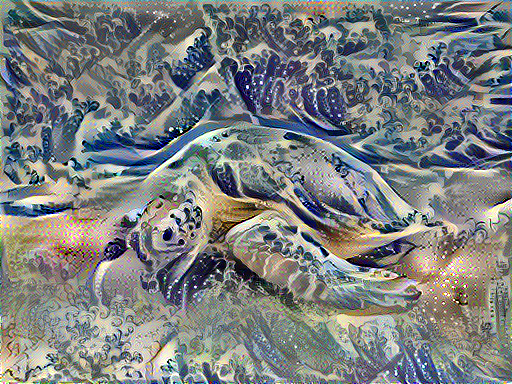
To download the image from Colab uncomment the following code:
1 | #from google.colab import files |
Visualize outputs
We “deprocess” the output image in order to remove the processing that was applied to it.
1 | def show_results(best_img, content_path, style_path, show_large_final=True): |
1 | show_results(best, content_path, style_path) |
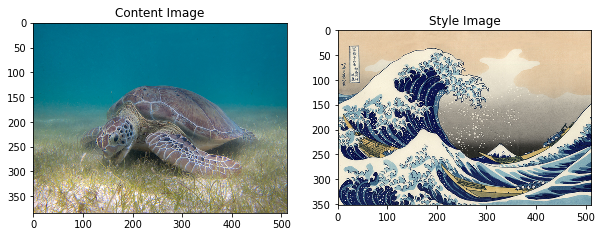
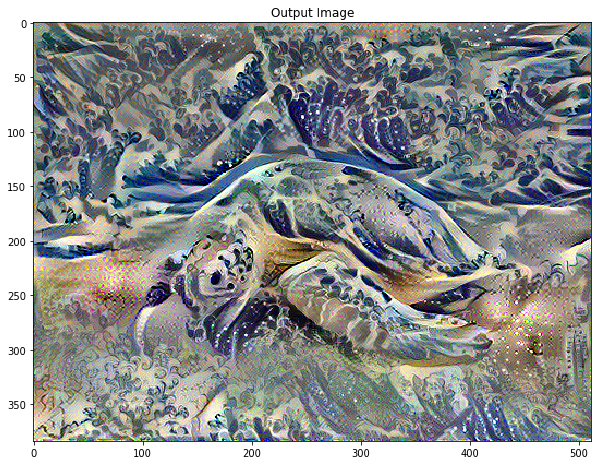
Try it on other images
Image of Tuebingen
Photo By: Andreas Praefcke [GFDL (http://www.gnu.org/copyleft/fdl.html) or CC BY 3.0 (https://creativecommons.org/licenses/by/3.0)], from Wikimedia Commons
Starry night + Tuebingen
1 | best_starry_night, best_loss = run_style_transfer('/tmp/nst/Tuebingen_Neckarfront.jpg', |
1 | show_results(best_starry_night, '/tmp/nst/Tuebingen_Neckarfront.jpg', |
Pillars of Creation + Tuebingen
1 | best_poc_tubingen, best_loss = run_style_transfer('/tmp/nst/Tuebingen_Neckarfront.jpg', |
1 | show_results(best_poc_tubingen, |
Kandinsky Composition 7 + Tuebingen
1 | best_kandinsky_tubingen, best_loss = run_style_transfer('/tmp/nst/Tuebingen_Neckarfront.jpg', |
1 | show_results(best_kandinsky_tubingen, |
Pillars of Creation + Sea Turtle
1 | best_poc_turtle, best_loss = run_style_transfer('/tmp/nst/Green_Sea_Turtle_grazing_seagrass.jpg', |
1 | show_results(best_poc_turtle, |
Key Takeaways
What we covered:
- We built several different loss functions and used backpropagation to transform our input image in order to minimize these losses
- In order to do this we had to load in an a pretrained model and used its learned feature maps to describe the content and style representation of our images.
- Our main loss functions were primarily computing the distance in terms of these different representations
- In order to do this we had to load in an a pretrained model and used its learned feature maps to describe the content and style representation of our images.
- We implemented this with a custom model and eager execution
- We built our custom model with the Functional API
- Eager execution allows us to dynamically work with tensors, using a natural python control flow
- We manipulated tensors directly, which makes debugging and working with tensors easier.
- We iteratively updated our image by applying our optimizers update rules using tf.gradient. The optimizer minimized a given loss with respect to our input image.
Image of Tuebingen
Photo By: Andreas Praefcke [GFDL (http://www.gnu.org/copyleft/fdl.html) or CC BY 3.0 (https://creativecommons.org/licenses/by/3.0)], from Wikimedia Commons
Image of Green Sea Turtle
By P.Lindgren [CC BY-SA 3.0 (https://creativecommons.org/licenses/by-sa/3.0)], from Wikimedia Commons
